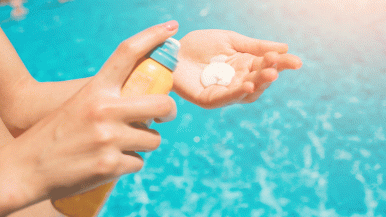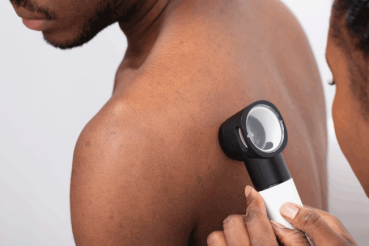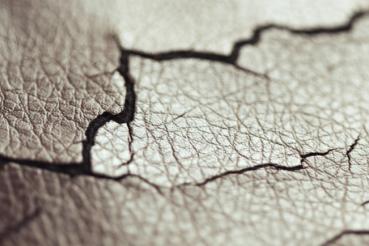With one American dying every hour of melanoma, it’s imperative to protect your skin.
Even during the fall and winter months, when sunshine may seem to be in short supply, the sun's cancer-causing, wrinkle-inducing rays actually beat down on us, rain or shine.
The best way to avoid damage caused by the sun's damaging rays is to stay out of the sun.
Because that strategy isn't always an option, when you do go out, cover up by wearing hats, sunglasses and long sleeves; avoiding sun exposure during peak hours of 10 a.m. to 2 p.m., when the sun's rays are most dangerous; and slathering on the sunscreen.
Using sunscreen wisely
Unfortunately, people don't always reap the full benefits of sunscreen and put themselves at risk because selecting sunscreen and using it appropriately can be confusing.
“Make sure you are paying attention to the expiration date on your sunscreen,” says Rush dermatologist David C. Reid, MD. “Sunscreens can go bad. When they do, they are not effective in protecting your skin from the sun. Most sunscreens have expiration dates listed on the packaging, but you can also tell if they go bad when the consistency or color of the sunscreen changes.”
Additionally, it’s important to make sure you’re using enough sunscreen to get full protection. “Most people only apply about 25%-50% of the recommended amount of sunscreen,” says Reid.
For your body, use about 1 oz. of sunscreen, or the amount that would fill a shot glass. For your face and neck, use about two fingers worth, or the amount the size of a quarter. “It’s definitely better to have too much than too little,” Reid says. “Also, don’t forget to protect hard-to-remember areas. So, wear sunglasses to protect your eyes, apply lip balm with SPF 30 to protect your lips and use sunscreen on your ears, which is a very common area where we see skin cancers.”
And remember that your skin needs time to absorb sunscreen for it to work effectively, so don't wait until you're already outside to put it on. Apply sunscreen at least 20 to 30 minutes before stepping outside and repeat every two hours.
FDA makes changes
To help clarify some of the confusion regarding sunscreens, the FDA made some changes regarding labeling. Sunscreens now must pass a test to garner the "broad spectrum" label. Broad-spectrum sunscreens are the most protective; they help to keep out both ultraviolet A (UVA) and ultraviolet B (UVB) radiation (but note, no sunscreen can shield you against all ultraviolet rays).
Sunscreens not shown to be broad-spectrum or having an SPF of at least 15 now carry warning labels, noting that spending time in the sun increases the risk of skin cancer and early aging and that the product hasn't been shown to help prevent sunburn, skin cancer or early skin aging.
What is SPF anyway?
SPF stands for "sun protection factor," and it is a guide that isn't without critics: For instance, the testing to arrive at a number is performed indoors and on skin types that might be different from your own.
That said, SPF numbering works this way: If you typically get a sunburn in 10 minutes without protection, an SPF 15 sunscreen protects you from burns 15 times longer than those 10 minutes (or 150 minutes); an SPF 20 protects you for 20 times longer (or 200 minutes).
SPF 30 should be adequate for most people in that it blocks 97% of UVB rays; however, dermatologists may recommend that some patients (such as those with heightened sensitivity to the sun) use a sunscreen with of 45 (anything higher hasn't been shown to provide any addition protection).
To determine the SPF number that's best for you, talk to your dermatologist.
'Waterproof' sunscreens don't exist
Another FDA change: They nixed the misleading terms "waterproof" and "sweatproof" because no sunscreen is anything-proof. For the same reasoning, the term "sunblock" has disappeared; no lotion or spray can truly block the sun.
The term "water-resistant," however, remains in the mix, but the label must indicate how long you can expect the SPF level of protection while swimming or sweating. And only two times are allowed on labels: 40 minutes and 80 minutes.
All sunscreen eventually wears off when you're in the water. As a precaution, apply sunscreen every two hours while you're outside, whether or not you're in the water or sweating profusely. That way, you can feel confident that you're covered.
And while not part of the recent FDA regulations, sunscreen sprays may also be affected down the line. Because they are applied differently from lotions, they may not provide the same coverage, and critics are concerned about the effects of sprays on the lungs when they are inhaled.
Protect yourself in the shade too
In addition to misconceptions about sunscreen, other issues regarding sun exposure can cloud judgment, including clouds themselves, which can't deter sunburn-causing ultraviolet (UV) rays.
So, resist the urge to skip the sunscreen on overcast days. Think that 100-year-old oak tree provides an adequate respite from the sun? Think again. UV rays can reflect off water, sand and snow, so it's possible to get sunburned even while relaxing in the shade.





